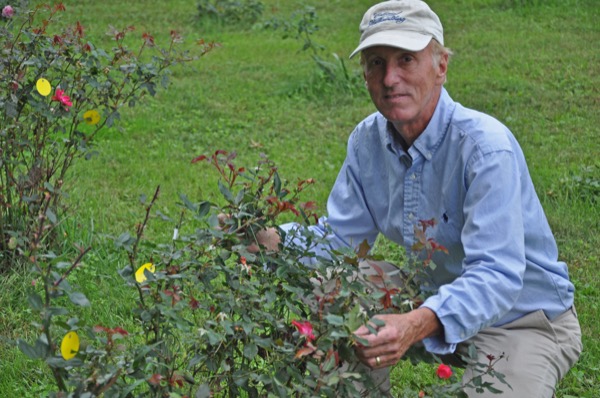
Battling RRD
UD's Evans receives USDA grant to combat rose rosette disease
2:58 p.m., Oct. 20, 2014--The University of Delaware’s Tom Evans and a group of 18 fellow researchers from six institutions have received a five-year, $4.6 million grant from the U.S. Department of Agriculture’s National Institute of Food and Agriculture’s (USDA-NIFA) Small Crop Research Initiative to study methods to combat rose rosette disease to protect the nation’s cultivated rose and the ornamental shrub industry.
Evans, professor of plant pathology in the Department of Plant and Soil Sciences, said that rose rosette disease (RRD) -- caused by the rose rosette virus (RRV) and transmitted by the wind transported eriophyid mite Phyllocoptes fructiphilus -- is now widespread throughout in the U.S. and can be found commonly in muliflora rose.
Research Stories
Chronic wounds
Prof. Heck's legacy
“The disease poses an enormous threat to all cultivated roses and has the potential to destroy the $400 million rose industry, which forms the cornerstone of the $2.81 billion wholesale U.S. shrub market,” said Evans.
Symptoms of RRD may vary with rose cultivar but most commonly include proliferation of lateral shoots — called witches broom — unusual thorniness, reddening of these shoots and distorted flowers. This often leads to stunting, defoliation and, ultimately, death of the plant.
While most cultivated roses are susceptible to RRV and the mite, Rosa californica and R. spinosissima and three species native to the eastern U.S. -- R. palustris, R. setigera and R. Carolina -- are reported to have high levels of resistance. Only one species of rose, R. bracteata, has been reported to be resistant to the mite vector.
Evans said that “this project has national importance for the horticultural industry and the rose enthusiast as the disease has the potential to kill millions of cultivated roses if left unchecked.”
The short-term goal of the project is to develop best management practices to manage mite transmission of the virus while the long-term goal is to identify sources of resistance to RRD and quickly transfer resistance into elite roses for use by the industry.
In April 2013, a formal outreach program for the project was initiated with the organization of the Rose Rosette Summit held in Newark and for which Evans served as scientific adviser.
Evans has worked with Mike Dobres of Nova Flora, a commercial breeder of flowers and ornamental plants for the garden and landscape industry, and Conard-Pyle/Star Rose for more than a year to evaluate dozens of commercial rose cultivars for resistance to RRD in the field at UD’s Agricultural Experiment Station in Newark.
According to Evans, “The project includes not only university and USDA researchers and extension personnel but also commercial rose breeders from across the country as key collaborators. All of the rose material that is developed must be evaluated for resistance to the virus and for their performance under different environmental conditions at locations across the United States.”
In the Mid-Atlantic region, Evans’ laboratory will test roses developed by the project’s public and private breeders for resistance to RRV in the field and in a new greenhouse screening facility that will allow for year-round testing of rose material.
With the addition of a new graduate student to Evans’ research group in the spring, the program will be in full swing testing the nation’s new roses for their resistance to this important rose disease and the mite that transmits the virus.
The project’s director is David Byrne from Texas A&M University and other investigators include Brent Pemberton Xinwang Wang, Charlie Hall, Kevin Ong, Patricia Klein, Marco Palma and Luis Ribera from Texas A&M; Mark Windham, Alan Windham and Frank Hale from the University of Tennessee; Matthew Paret and Gary Knox from the University of Florida; Francisco Ochoa Corona and Jennifer Olson from Oklahoma State University; and John Hammond, Ramon Jordon and Ronald Ochoa from USDA-ARS in Beltsville, Maryland.








